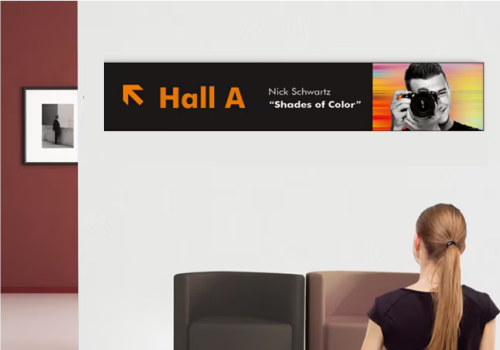Replacing LCD with Direct View Small Pitch LED digital signage for window display.We help retailers turn storefronts into high-impact digital experiences.Traditional LCD signage struggles under sunlight, wears out quickly, and limits visibility.
Multiple Length and Width Options from small size to the biggest one! We also support customized sizes.
LED displays are ideal for displaying panoramic content and catching the audience’s attention in advertising and digital signage applications, while smaller sizes are commonly used in appliances, kiosks, mobile devices, flight simulators, and gaming machines.They are used in numerous areas which include retail, automotive dealerships, public transportation, advertising, corporate, restaurants, and many other applications around the world Interactive Digital Signage
Introduction to Small Pixel Pitch LED Displays
Small pixel pitch LED displays are revolutionizing visual communication for businesses looking to enhance their traffic and present a professional image. These advanced displays provide high resolution and clarity, making them ideal for various applications including retail, corporate settings, and public venues.
Understanding Small Pixel Pitch Technology
Small pixel pitch LED displays are characterized by their narrow pixel spacing, typically less than 2.5mm. This close proximity of pixels ensures superior image resolution and sharpness, allowing detailed content to be displayed with high fidelity. The smaller the pixel pitch, the higher the pixel density, resulting in crisper visuals. This makes small pixel pitch LEDs suitable for environments where viewing distances are short, such as conference rooms, control centers, and high-end retail spaces.


Advantages of Small Pixel Pitch LED Displays
Superior Image Quality:
Small pixel pitch LEDs offer unparalleled image quality. Their high resolution and pixel density deliver vibrant colors and clear details, making them perfect for showcasing detailed visuals and intricate designs.
Seamless Viewing Experience:
Unlike traditional displays, small pixel pitch LEDs provide a seamless viewing experience without visible gaps between modules. This creates a smooth and uninterrupted image, crucial for professional presentations and high-end advertising.
Flexibility in Design:
These displays can be customized to fit various shapes and sizes, allowing for creative and dynamic installations. This flexibility supports a wide range of design possibilities, enhancing the professional aesthetic of any space.
Energy Efficiency:
Modern small pixel pitch LED displays are designed for low power consumption, making them an energy-efficient choice for businesses looking to reduce operational costs while maintaining high-quality visual output.
Applications in Enhancing Traffic:
Small pixel pitch LED displays are particularly effective in environments where capturing attention and conveying detailed information is essential. In retail, they enhance storefront displays, attracting customers with vibrant, dynamic visuals. For corporate settings, they serve as impressive tools for presentations and digital signage, projecting a professional image and engaging viewers effectively. Public venues benefit from these displays by providing clear and captivating information in areas like airports, stadiums, and transportation hubs.
Professional Appeal:
The professional tone and high-quality visuals of small pixel pitch LED displays contribute significantly to a brand’s image. They project sophistication and attention to detail, which can elevate a company’s reputation. In competitive markets

With the continuous development and maturity of display technology. LED display technology has gradually become the first choice for various major industries. And for the once popular LCD monitor, has received a relatively large impact? So what is the difference between the two?
Supports different brightnesses:
The LED display screen can automatically adjust according to the brightness of the environment to ensure a normal display of the picture. LCD displays are relatively weak.
Image Quality:
LED Displays LED displays generally have higher brightness and better contrast than LCD displays. This results in vibrant colors, deeper blacks, and better overall image quality, especially in environments with high ambient light.
Energy Efficiency:
LED displays are known for their energy efficiency. They consume less power than traditional LCD displays, especially in LED-backlit LCD configurations, where the LEDs can be dimmed or turned off in darker areas of the screen.
Durability:
LED displays are generally more durable and sturdier than LCD displays. Because they don’t require a separate backlight, they tend to last longer and are less susceptible to damage from shock or vibration.
Viewing angles:
LED displays typically offer wider viewing angles, ensuring consistent image quality when viewed from different angles. LCD monitors may experience color casts or loss of brightness when viewed from extreme angles, making them less suitable for applications with critical viewing angles.
Scope of application:
Compared with LCD displays, LED displays have a wider range of applications. From indoors to outdoors, stadiums to theaters, and more.
Degree of customization:
LED displays are more customizable. You can customize LED displays of different shapes and sizes according to your event needs.
All in all, LED displays offer advantages in image quality, energy efficiency, durability, and viewing angles compared to LCD displays. However, the choice between the two depends on specific requirements such as budget, application, and desired features.